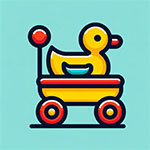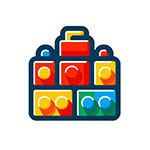
Potty Training: When’s the Right Time and What Works Best?
Navigating the waters of potty training is both a thrilling and nerve-wracking time for parents. It’s a clear sign your little one is growing up, taking those first steps towards independence. However, children don’t all march to the beat of the same drum; their readiness and the strategies that work best can vary widely. This blog post explores what current research and expert guidelines suggest about timing and techniques for effective potty training.
Recommended Items To Get Started Potty Training (With Links)
- Potty Chair or Seat – A child-sized potty chair or a seat reducer that fits on a standard toilet helps make the transition easier by ensuring the child feels secure and comfortable.
- Step Stool – A stool can help a child reach a standard toilet more easily and safely, and it can also be used at the sink to promote hand washing after using the potty.
- Training Pants – Reusable or disposable training pants provide the feel of real underwear but offer the absorbency of a diaper. They’re ideal for children who are almost there but might still have occasional accidents.
- Flushable Wipes – Softer and more substantial than toilet paper, flushable wipes can help your child clean up more efficiently and independently after using the toilet.
- Potty Training Books – Books that explain potty training in a fun and engaging way can help children understand what to expect and feel more comfortable with the process.
- Reward Chart with Stickers – A visual reward chart with stickers can motivate your child by tracking progress and celebrating milestones, making the process fun.
- Portable Potty – For on-the-go potty training, a portable potty is essential. It can be used in the car or discreetly tucked away when visiting places without child-friendly toilet facilities.
- Waterproof Mattress Protector – Protect the mattress from nighttime accidents with a waterproof cover, making clean-ups less stressful and more manageable.
- Timer – A timer can remind both parent and child when it’s time to try using the potty, maintaining consistency, which is key in potty training.
- Fun Soap Dispenser or Hand Sanitizer – Encourage hygiene with a fun, child-friendly soap dispenser or hand sanitizer. Children love using items designed just for them, and this can make washing up more appealing.
Spotting the Signs of Readiness
Knowing when to start potty training is crucial. Jumping the gun can be just as problematic as waiting too long. Experts in child development suggest that most toddlers are ready to begin between 18 and 30 months, though it’s not unusual for some kids to take a bit longer. Here are some tell-tale signs that your toddler might be ready:
- Physical readiness: This is about bladder and bowel control. Look for signs like staying dry for a couple of hours or waking up dry from a nap.
- Cognitive readiness: Your child should be able to understand simple instructions and communicate their needs, whether through words, gestures, or expressions.
- Emotional and social readiness: An interest in using the toilet, a dislike for dirty diapers, and a curiosity about underwear or potty chairs are all green lights.
- Motor skills: Your child should be able to get on and off a potty chair without help.
Techniques to Ease the Process
Once you’re confident your child is ready, these strategies can help make potty training smoother:
- Create a Routine Consistency is your best friend here. Establish regular times for sitting on the potty—like after meals or before bedtime—to foster a predictable routine.
- Pick the Proper Equipment Ensure the potty chair or seat is comfortable and suits your child’s size. Some kids prefer a standalone potty, others a seat that fits over the regular toilet.
- Encourage with Positive Reinforcement Motivate with praise, stickers, or a rewards chart for reaching milestones. Focus on celebrating the effort, not just successes.
- Model Behavior Kids learn a lot by imitation. Letting them see family members use the toilet can normalize and encourage potty use.
- Opt for Easy Clothing Choose clothes that are simple to take off quickly, like pants with elastic waistbands. Steer clear of tricky fastenings that might delay them in a rush.
- Handle Accidents with Care Mishaps are part of the journey. Treat them lightly without drama or fuss. Comforting your child helps them feel secure to try again.
- Plan for Nighttime and Naptime Managing potty training during sleep will likely come later in the process. Use waterproof covers for mattresses and consider training pants for overnight. Nighttime control often develops last and can’t be hurried.
Wrapping It Up
Potty training is more of a marathon than a sprint, demanding patience and adaptability from parents. Every child’s journey to using the toilet independently is unique. By waiting for the right signs of readiness and applying these effective techniques, you can set the stage for a positive and low-stress experience. If challenges persist, it might be helpful to consult your child’s pediatrician for advice tailored to your situation. With thoughtful guidance, potty training can be a significant developmental milestone filled with learning and growth for both your child and you.





